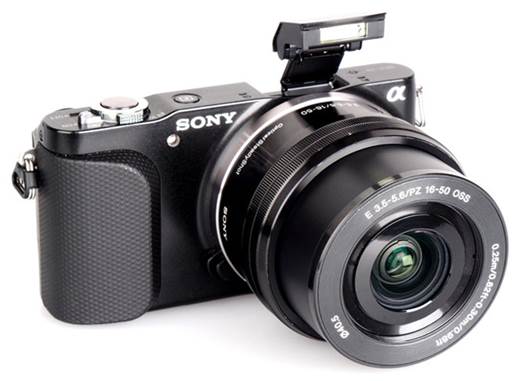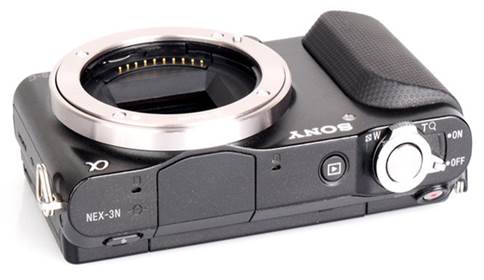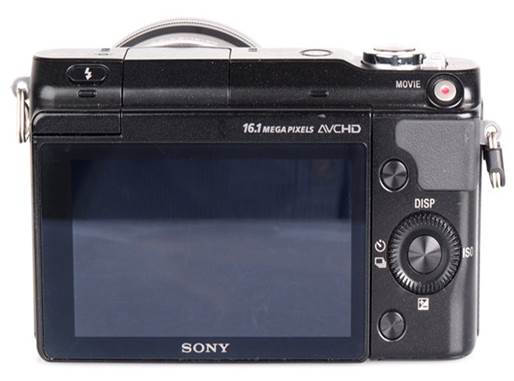Sony NEX-3N is not the latest mirror less
camera of Sony, and is the mirrorless sensor camera having the world’s smallest
APS-size, and coming with it is an electric 16-50mm zoom lens with a RRP having
the price of $598.5. Its price is available at $487.5 and it’s available in
black or white version. This camera is redesigned, from Sony NEX-F3, with
processing manipulation improvement more classic design looking better than the
recommended price.
Features

Product
image
The new features consist of a optical zoom
control surrounding the shutter button, familiar to those who once used the
camera having compact zoom size, and very suitable for the existing electric
zoom lens. A new improved feature is processing BOINZ images based on the level of image noise reduction to improve mage
quality when shooting in low light. A new feature is image auto adjustment,
which can automatically cut the images based on the object, shoot portrait
automatically, auto macroscopic and adjust AF tracking automatically based on the 3rd rule.
OSS PZ 16-50mm lens has optical
image stabilization feature, and as the name, electric zoom, expanded when
turning on, it can be controlled by using the front ring of the lens, nearby
zoom control, and with NEX-3N (the
first NEX camera with this feature) using the zoom rotating ring on the top. 35mm lens is equivalent to 24mm to 75mm, giving a good wide-angled view.

Product
image
Main
features
·
16.1
megapixel CMOS APS-C sensor
·
16-50mm, f/3.5-5.6 OSS electric
zoom lens
·
Sony NEX / E Mount
·
3 inch tilted screen, 460k dot res
·
Quay video Full HD with stereo
·
ISO 200 to ISO16000
·
Sweep panoramic shooting
·
HDR / D-Range shooting
·
4 fps continuous shooting
·
Auto image adjusting
·
Zoom level
·
Pop up flash
·
Available in white or black version
·
Battery life at 480 images
Processing manipulation

Sony
NEX-3N not only has rubberized ring on the front, but it also has a rubberized
ring on the back for the finger.
Sony NEX-3N not only has rubberized ring on
the front, but it also has a rubberized ring on the back for the finger, which
is much more improved than NEX-F3, as well as an ISO branding on the right of
the rotating ring to control/move the options. This can be customized if you
want to change it from default setting, and once set it will allow you to
access some different options. There’re 2 "soft" button on the back
of the camera, one of the buttons on the top is used to access Menu, and the second can be customized to access
to the options faster.
A memory card slot can be found on the left
under the HDMI / USB button, which can use the Sony storage or SD card. The camera has low pricing, with rubberized ring helping to create a
good impression, and the quality seem to be extraordinarily good.

A
memory card slot can be found on the left under the HDMI / USB button.

Camera
screen
Menu
The menus of Sony NEX is not the best for use (Sony Cyber-shot or Alpha menu is better), but after a while it becomes easier to use when you get familiar to
the position of the option. It’s possible to adjust the ISO
soft button and the second button (no labeled) which helps
to access the options faster.
Sony NEX-3N has 3inch tilted screen with 460k dot, though it’s not a
touch screen. Image processing is good. It’s convenient for hand-holding and
extremely compact with 16-50mm
electric zoom lens.
Battery

Camera
battery
Battery life is rated at 480 shots according to the Sony / CIPA testing result,
which is excellent because it lasts longer than most of
other mirror less cameras. Besides, the camera uses Sony
InfoLithium battery which means that the camera will
let you know exactly how much battery life remains.
Speed
We have taken some images to test the
response of the camera, switching from the first images, shot by shot, with
focus speed etc. we take some images and use the average to make sure that the
resting result is accurate and consistent, making it easy to compare with other
cameras.
·
Shutter Response: <0.05
·
Wide - Focus / Shutter Response: 0.3
·
Full zoom - Focus / Shutter Response: 0.3
·
Switch on Time to Taking a Photo: 2.1
·
Shot to Shot without Flash: 0.8
·
Shot to Shot with Flash: 0.9
·
Continuous Shooting – JPEG: 4 fps (10 shots)
·
Continuous Shooting – Flash: 0.8 s
·
Continuous Shooting – RAW: 4 fps (5 shots)
Shutter response is incredible, and the
focusing speed is good. Switching in time is a little slow for this kind of
camera because the electric zoom lenses have to expand. Continuous shooting is
reasonable at 4fps and the camera
will take 10 shots at JPEG format
before slowing down.